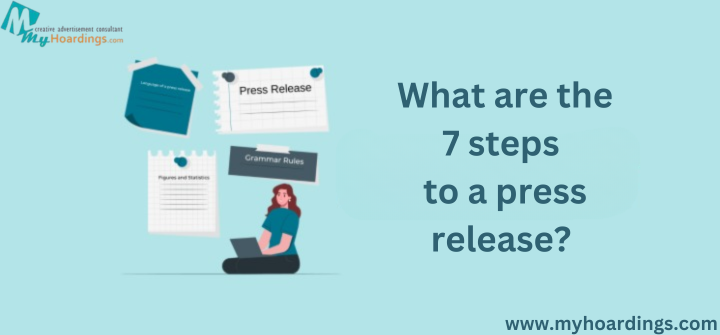7 Essential Steps to Writing an Effective Press Release
A press release is a powerful communication tool that allows businesses to share newsworthy information with the media and the public. Crafting a successful press release involves a structured approach to ensure your message is clear, compelling, and reaches the right audience. Here are the seven key steps to writing an effective press release:

1. Craft a Compelling Headline
The headline is the first thing journalists and readers will see, so it needs to grab attention and clearly communicate the essence of your announcement. A great headline should be concise, engaging, and informative, giving the reader a reason to learn more. Avoid jargon and focus on making it straightforward and impactful.
Tip: Use action words and keep it under 10 words if possible.
2. Write an Engaging Lead Paragraph
The first paragraph, known as the lead, is critical for setting the tone of your press release. It should provide the “5 Ws” (who, what, when, where, and why) to quickly inform the reader about the core of the announcement. The lead should be no more than 1-2 sentences, focusing on the most important details.
Tip: Hook the reader by highlighting the news value of your announcement right at the start.
3. Expand on Key Details in the Body
After the lead, the body of the press release should provide more in-depth information about the announcement. This section should include supporting details, background information, and quotes from key stakeholders or company representatives to give more context and authority to the story.
Tip: Follow the inverted pyramid structure—start with the most important information and gradually move to lesser details.
4. Include a Strong Quote
Adding a quote from a company spokesperson, CEO, or relevant expert brings a human element to the press release and can help convey emotion or opinion. A well-placed quote should support the main point of the release and offer additional insights or perspectives that strengthen the story.
Tip: Ensure the quote sounds natural and adds value, rather than just repeating facts already stated.
5. Provide Additional Resources and Context
If applicable, include any relevant resources such as links to websites, images, videos, or product information that journalists or readers may need. This section allows the press release to act as a comprehensive source of information for anyone interested in covering the story or learning more.
Tip: Always hyperlink relevant keywords for better SEO and accessibility.
6. Add Contact Information
It’s crucial to provide clear contact details at the end of the press release, so journalists or interested parties know how to reach you for follow-up questions. Include the name, email, and phone number of the primary media contact, and if available, the company’s website or social media handles.
Tip: Ensure the contact details are up-to-date and monitored to avoid missed opportunities.
7. Include a Boilerplate
The boilerplate is a short paragraph at the end of the press release that provides a brief overview of the company or organization issuing the release. It typically includes the company’s mission, history, and key achievements, giving journalists essential background information.
Tip: Keep the boilerplate concise—around 100 words—and make sure it’s consistent across all press releases.
By following these seven steps, you can create a press releases that effectively communicates your news, captures media attention, and enhances your brand’s visibility. A well-crafted press release can make all the difference in getting your story noticed by the right people.
Need help writing your press release? Contact MyHoardings for expert PR solutions!
- Email: business@myhoardings.com
- Phone: +91-9953847639
- Website: www.myhoardings.com

